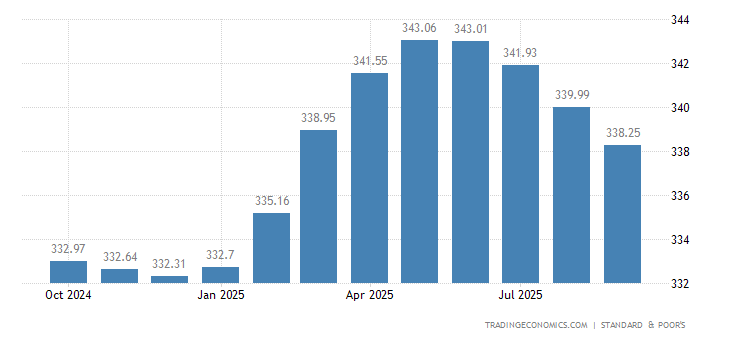AN ATTIC APARTMENT NEAR THE CENTER OF STOCKHOLM
$2.76 MILLION (23.9 million Swedish krona)
Once an attic used for storage, this two-bedroom, two-bathroom, roughly 2,500-square-foot space was converted into an apartment around 1970 and last renovated in 2013. It is on the seventh and eighth floors of a 1915 building with seven units on a quiet street in Ostermalm, a fashionable neighborhood just east of Stockholm’s city center.
The apartment has crisp white walls, oak floors, high ceilings and a terrace overlooking nearby rooftops. The front door opens onto a hallway that leads to a family room with a balcony and a staircase up to the main living area. The large upstairs living room has built-in bookshelves and large sliding doors opening onto a terrace. Up several steps to the left of the living room is a television room; on the right is an office with a skylight. Both the office and the family room downstairs could be used as bedrooms, said Jan Lundqvist, a broker with Residence, the Swedish real estate firm and Christie’s affiliate that has the listing.
Past the living room are the kitchen and dining area. A small hall leads to two bedrooms. One, the master suite, has a generous walk-in closet and an adjoining laundry room. As is typical in Sweden’s older homes, Mr. Lundqvist said, the bedrooms share a bathroom. (A second bathroom is on the same floor near the entrance, by the stair landing.)
The building’s amenities include bike storage, a parking garage and a communal wine cellar in the basement. Restaurants, tennis courts, parks with jogging trails and public transit are all within walking distance. The Stockholm Arlanda Airport is about a half-hour drive.
MARKET OVERVIEW
Home prices in Sweden have increased sharply since the 2008 global financial crisis, driven by the combination of a strong economy, low mortgage rates, a chronic housing shortage and rapid population growth, specifically an influx of refugees and others moving to urban centers for jobs and schools. But even during the recession Sweden’s real estate market didn’t suffer much, thanks to the shortage of housing and the swift countermeasures taken by the government and central bank, said Olof Manner, head of research for Swedbank, a financial services group based in Stockholm.
Prices are now about 50 percent higher than they were in 2008, he said. “I don’t think we have a bubble,” he said of the market. “But it’s very richly priced.”
Recently, however, the price increases have been slowing, Mr. Manner said. In 2015, prices rose 15 percent over the previous year; in 2016, that number fell to 10 percent. Home prices are now 7 percent higher than they were at this time last year, he said.
He attributed this to several factors: Banks have become stricter about mortgage applicants’ debt-to-income ratios; the government recently changed its mortgage amortization rules to require faster repayment schedules on new loans; fixed mortgage rates have risen slightly; and the novelty of the low rates has worn off.
A continuing challenge, he added, is that there aren’t enough new homes being built to meet demand, and the ones that are built don’t suit the refugee population’s need for small, affordable units.
Elisabeth Hallberg, a broker and manager with Per Jansson, a luxury real estate agency in Stockholm, said it’s a seller’s market. “The problem for the real estate agent is not to find buyers; it’s to find sellers,” she said, estimating that about 70 percent of the transactions she worked on in the past year have had multiple offers, and many had received an offer before the first open house.
The most desirable areas in the city, agents said, are Djurgarden, a parklike area with well-appointed villas, and Ostermalm, where this apartment is. Lars Fogelklou, the chief executive and a founder of Residence, said that in Djurgarden, high-end apartments can sell for between 20 million Swedish krona ($2,312,640) and 100 million Swedish krona ($11,563,200). Agents said prices in Ostermalm range from between 3 million Swedish krona ($346,896) and 10 million ($1,156,320) at the lower end, and up to around 70 million Swedish krona ($8,094,240) or 80 million ($9,250,550) at the higher end, with a few properties reaching 100 million Swedish krona ($11,563,200).
WHO BUYS IN STOCKHOLM
Most of Stockholm’s luxury home buyers are Swedish, some of them Swedes returning from abroad, agents said.
Ms. Hallberg estimated that about 20 percent of her clients are from Switzerland, Germany, the United States, Britain and France. Over the past year, Mr. Fogelklou said, a few of his clients (about 5 percent) have been from China, Germany and the United States; a much larger share (about 40 percent) were expats returning to Sweden.
BUYING BASICS
There are no restrictions on foreigners buying property in Sweden, said Jonas Bergquist, a Stockholm-based partner with Magnusson, a law firm with offices in the Baltic region and Scandinavia.
Read more…





















